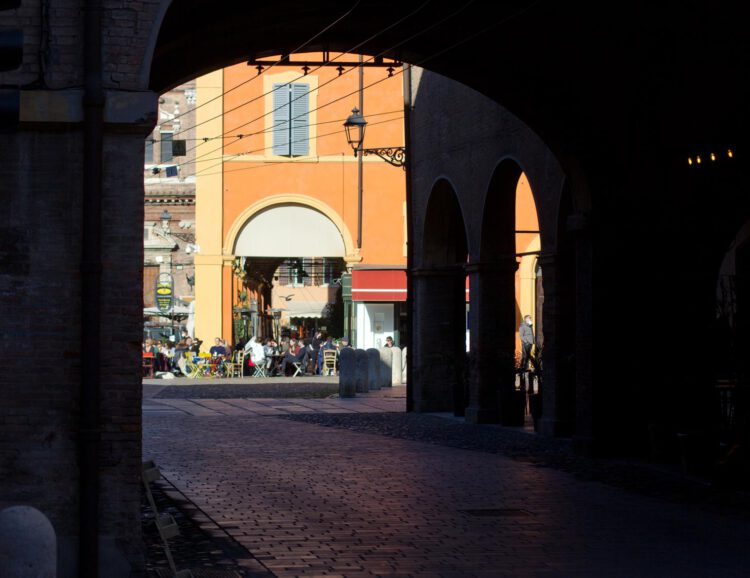
…mit wenig Gebackenem, viel Erwerbsarbeit (25 Minuten Radio über Datteln!), zehn Jahre Zuckersüß/Zeit für einen Newsletter? – und wie immer den besten Links der letzten Tage.
Seit dem letztem Zuckersüß bin ich rekordverdächtig wenig in der Küche gestanden, dabei herausgekommen sind random Muffins mit gehackten Datteln drin, Schoko-Bananen-Muffins mit Kakaonibs (nach einem Rezept von 2019) und eine Quittentajine.
Grund dafür war u.a. meine Ö1-Moment-Kulinarium-Sendung über Datteln, die hier noch bis Freitag nachzuhören ist. Für die Uni habe ich mehrere hundert Seiten über Öffentlichkeitstheorien und dann über New Materialism gelesen, bis ich dachte, mein Hirn macht einen Knoten…
Zehn Jahre Zuckersüß-Sonntags-Linksammlungen – Zeit für einen Newsletter?
Beim Zusammenschreiben der heutigen Links ist mir aufgefallen, dass ich die erste Ausgabe „Zuckersüß“ am 5. Februar 2012 veröffentlicht habe. Vor mehr als zehn Jahren! Damals ging es u.a. um ein Snickers-Rezept, das damals ziemlich neue Rookie-Blog von Tavi Gevinson, das 5 People 1 Guitar-Video von Walk Off the Earth und die negativen Seiten des Musikstreamings. Der Link dazu führt ins Leere, genau wie drei weitere. Das sind 40% meiner anfangs auf zehn Punkte begrenzten Empfehlungen – besonders langlebig ist das Web ja nicht.
2012, ein Jahr vor der Einstellung des Google Reader (Thema in Zuckersüß 58), waren RSS-Feeds in der Blog-Bubble noch ein Ding. Facebook, Instagram und Twitter haben diese Technologie immer weiter verdrängt, eine Tatsache die ich letztes Jahr in meinem Rant Eine Ode an RSS-Feeds. und: legt euch einen Feedreader zu! im Detail kritisiert habe. tl;dr:
In meinen Augen ist dieser klammheimliche Abschied vom Feed die endgültige Kapitulation vor Social-Media-Monopolisten. Denn die Blogger_innen, die keinen RSS-Feed mehr anbieten, liefern sich den Plattformen komplett aus. Wenn sie Leser_innen erreichen und Erfolg haben wollen, müssen sie nach den Regeln der Plattformen spielen. Dadurch wird die Vielfalt der „Blogosphäre“ tendenziell noch geringer, Nischenblogs verschwinden ganz und gar, und Monopolplattformen werden noch allmächtigere Gatekeeper, als sie eh schon sind. Und das schadet nicht nur den Leser_innen und Blogger_innen, sondern auch „dem Internet“ als ganzen.
Eine Ode an RSS-Feeds. und: legt euch einen Feedreader zu!
2021 wurden dann Newsletter langsam richtig groß, als direktere Alternative zum Ausspielweg Social Media-Plattformen. Zu diesem Trend hatte ich eine sehr klare Meinung, die sich bis jetzt kaum geändert hat:
In meinen Augen sind sie allerdings ein schlechter Ersatz für Blogs: Sie ermöglichen erst recht wieder super viel tracking und targeting und sorgen ebenfalls für „Silo-Bildung“, da sie nicht immer offen zugänglich und durchsuchbar sind, sondern nur im Mail-Posteingang stattfinden – Archive und Links anderswohin gibt es nicht immer. Außerdem bahnt sich auch in der Newsletterwelt die Plattformisierung und Monopolisierung an (s.a. Is Substack the Media Future We Want? – The New Yorker). Substack bietet im Gegensatz zu TinyLetter oder MailChimp immerhin per default auch die Möglichkeit, einzelne Newsletter per RSS zu abonnieren, doch glücklicherweise hat diese Plattform den Markt noch nicht ganz übernommen…
Eine Ode an RSS-Feeds. und: legt euch einen Feedreader zu!
Jetzt, 2022, hat Substack eine iOS-App veröffentlicht, die quasi ein RSS-Reader ist (Substack launches an iOS app for reading newsletters – The Verge). Darin lassen sich sowohl abonnierte Substack-Newsletter als auch externe RSS-Feeds lesen. Während die Newsletterwelt also full circle zu gehen scheint, frage ich mich: Ist es trotzdem Zeit für einen Newsletter?
Denn, mal ehrlich: Was ich für die beste Art halte, Blogs zu lesen, ist für jemand anders (z.B. eine nicht so tech/medien-affine Person) möglicherweise ganz anders. Von allen zu verlangen, einen RSS-Reader zu nutzen (so einfach es ist, wirklich, keine Scheu!), ist von meiner Seite aus schon ziemlich arrogant. Wenn ~der Medienwandel~ der letzten Jahre eines gezeigt hat, dann, dass Medienmacher_innen näher auf die Leser_innen/Hörer_innen zugehen müssen und nicht anders herum.
Anders als Blogger_innen/Medienschaffende, deren Einkommen von Leser_innenzahlen abhängig ist, könnte es mir völlig egal sein, wie viele Leute auf mein Blog durchklicken. Und zu einem gewissen Grad ist es mir das auch – ich habe keinerlei Statistiktools im Hintergrund laufen, die mir etwas über Seitenaufrufe, Besucher_innen-Demographie usw. verraten.
Ich schreibe dieses Blog seit mehr als zwölf Jahren aus einer intrinsischen Motivation heraus. Es ist mein Raum, Dinge festzuhalten, die mich beschäftigen, von Backrezepten über Restaurantbesuche, Strickmuster zu Links am Sonntag. Dennoch hoffe ich natürlich, dass das auch für Leser_innen relevant ist. Doch die, also ihr, müssen/t ersteinmal von den Posts hier erfahren. Ohne RSS-Reader, bloß mit Social Media als „Benachrichtigungsquelle“ ist das ein Glücksspiel (denn um den Insta-Algorithmus bemühe ich mich sehr wenig). Und das führt mich wieder zum Newsletter:
Jede_r, der/die heutzutage im Web unterwegs ist, nutzt E-Mail. Vielleicht ist es deshalb an der Zeit, meine Linksammlungen direkt zu verschicken. Würdest du einen Zuckersüß-Newsletter abonnieren? Diese Frage treibt mich ehrlich um – schreib mir gerne eine E-Mail, einen Tweet (@jasowies_o) oder eine Insta-DM (@zuckerbaeckerei).
Hier folgen jetzt, wie immer, meine liebsten Links der letzten Woche:
Rezepte
Baked Oatmeal Cups – Almond Butter Banana Baked Oatmeal Cups
Kandidat fürs Frühstück kommende Woche.
Salted Pistachio & Dark Chocolate Chunk Cookies | Love and Olive Oil
Teure Zutatenliste.
Chinesisches Wintergemüse 2: Spargelsalat – Gruss aus der Küche
Tobias Müller über ein Gemüse, von dem ich noch nie gehört habe.
Chicorée & Apfel: Süssholz raspeln mit Alain Passard | lamiacucina
Das hört sich gut an.
Texte
A Vibe Shift Is Coming. Will Any of Us Survive It? – The Cut
Ich fühl mich alt.
A vibe shift is the catchy but sort of too-cool term Monahan uses for a relatively simple idea: In the culture, sometimes things change, and a once-dominant social wavelength starts to feel dated. Monahan, who is 35, breaks down the three vibe shifts he has survived and observed: Hipster/Indie Music (ca. 2003–9), or peak Arcade Fire, Bloc Party, high-waisted Cheap Mondays, Williamsburg, bespoke-cocktail bars; Post-Internet/Techno Revival (ca. 2010–16), or the Blood Orange era, normcore, dressing like The Matrix, Kinfolk the club, not Kinfolk the magazine; and Hypebeast/Woke (ca. 2016–20), or Drake at his Drakest, the Nike SNKRS app, sneaker flipping, virtue signaling, Donald Trump, protests not brunch.
TikTok and the Vibes Revival | The New Yorker (via Joy the Baker)
Nochmal zum Thema Vibes:
Casually cooking a meal in a swaying sailboat on the open Atlantic Ocean is a vibe. So is slaloming down the road on a skateboard to Fleetwood Mac’s “Dreams” while swigging cranberry juice, as Nathan Apodaca did in a now famous TikTok. We know the meaning of the word “vibe,” of course. It’s a placeholder for an abstract quality that you can’t pin down—an ambience (“a laid-back vibe”). It’s the reason that you like or dislike something or someone (good vibes vs. bad). It’s an intuition with no obvious explanation (“just a vibe I get”). Many vibes don’t have specific names, but some do. Saudade, the Portuguese word for a bittersweet longing, could count as a vibe. So, too, could the Japanese iki, an attitude of casually disinterested elegance, or the German fernweh, the longing to be somewhere far away, evoked by distant vistas or unknown forests. (Hygge, the Danish quality of contented coziness, is a vibe that has been wholly commercialized in the United States.)
What is a vibe? – by Robin James (via The New Yorker)
Sehr theorielastig im Vergleich zu den zwei Texten oben.
As a form of governmentality, the “If you see something, say something” campaign relies on citizens’ commonsense perceptions of how things are oriented with respect to one another and with respect to them as perceivers, or what Amoore calls their “affective judgment on the look and feel of a place with which one is familiar” (Amoore 142). Vibes are cops; they are systems designed to amplify patriarchal racial capitalism’s property interests and punish whatever challenges those interests.
Plagiate in der Küche: braucht es Copyright für Kochrezepte? – Essen & Trinken – derStandard.at › Lifestyle (via @katha_esskultur auf Instagram)
Copyright/IP finde ich in sehr vielen Fällen wirklich unnötig (bzw. profitieren oft genug nicht die Richtigen davon), deshalb steht dieses ganze Blog unter einer CC-Lizenz. Rezepte rechtlich zu schützen halte ich deshalb für grundfalsch – wie auch Katha Seiser und Lukas Mraz, die in diesem Artikel zu Wort kommen. Btw, in der NYT ist im November schon ein ähnlicher Text erschienen: Who Owns a Recipe? A Plagiarism Claim Has Cookbook Authors Asking
Heute kann jeder Alfred Biolek sein, jeder kann aus seiner Küche senden. Nicht wenige tun das. Und manche Rezepte werden ein viraler Hit. Penne alla Wodka kennen viele nur mehr als Gigi-Hadid-Pasta, weil das Supermodel die Anleitung gepostet hat. In Finnland wurde 2021 der Feta knapp, als ein Tomaten-Feta -Nudel-One-Pot-Gericht der absolute Hit auf Tiktok war. Die Frage, wem ein Rezept gehört, wird damit relevanter.
Rack of Squirrel, Anyone? These Chefs Are Serving Up Invasive Species. – Mother Jones (via Technically Food)
Eingeschleppte Arten durch Aufessen eliminieren?
“We need to say from the beginning that the goal is to reduce these populations—not to create a market for them. We don’t want people to say ‘wow, this crayfish is really good. I wish we had it in this river system’ or something like that,” Roman says. “In this time of globalization, we’re moving animals, plants and fungi around all the time that have ecological impacts. We are trying to work against that.”
Critics are wary of how effective invasivorism can be at achieving its aims, with evidence the “eat them to beat them” approach can have the opposite effect for some species.
A Conversation with Sandor Katz – Alicia Kennedy
Sandor Ellix Katz hat „The Art of Fermenation“ geschrieben, das die Kombucha/GingerBeer/Kimchi/Sauerkraut-Produktion in meiner WG gestartet hat.
I would say since roughly 2011, maybe every year I’ve seen lists of the hot new trends in food that include fermentation. That always makes me chuckle a little bit, because fermentation is ancient. The products of fermentation have had enduring appeal. And if you think about ferments like bread, cheese, beer, wine, vinegar, they were just as prominent in our great-grandparents’ time as they are now. It’s just that more people are aware of the process by which they are created. They’re aware of fermentation. And I think that has everything to do with the microbiome and growing awareness that bacteria are not just our dangerous enemies, but they actually are our symbiotic partners, and we need them in order to function well. But people don’t always know when to welcome them and when to fear them.
What We Write About When We Write About Food – The New York Times Style Magazine
Eine kurze (USA-zentrierte) Geschichte des food writing.
So when we write about food, we are already writing about class struggle. “The cooking of a society is a language in which it unconsciously translates its structure,” the French anthropologist Claude Lévi-Strauss wrote in 1966. To read about an extravagant meal can be a vicarious substitute for not being able to afford one or make us feel superior to those who waste their money on such follies.
Joy Wilson: Baking, Beignets and the Bayou Are The Perfect Recipe- the247 (via Joy the Baker)
Joy the Baker war eines der ersten Blogs, das ich ab 2009 oder 2010 regelmäßig gelesen habe. Ihre Gedanken zum mehr-als-(seichte)-Foodbloggerin-sein (durch Linklisten, bei ihr „Let it Be Sundays“ betitelt) kann ich gut nachvollziehen, das ist der Grund, warum es mein „Zuckersüß“ gibt.
Let It Be Sundays started as a way for me to talk about non-food-related things on my food website. I was finding that I wanted to talk about things that were going on in the world but that didn’t have a place in a chocolate cake recipe. I started the Let It Be Sundays posts because that’s the day we all get to relax, even as self-employed creators. It’s inspirational, things I love, things that have made me think. It’s just my outlet of who I am and what I care about, to show that I’m a whole person and not just someone who deals with butter all day.
Hamantascherln — Small Pockets, Viennese Style: Melt-In-The-Mouth Jewish Purim Cookies. The Whole Megillah! (Recipe) #PurimKekse #OzneiHaman #WienerTascherln #Hamantashen | Jewish Viennese Food
Superinteressante Übersicht über Hamantasche(rl)n in Wien. Als ich vor drei Jahren selber welche gebacken habe, habe ich auch schon versucht, den Kontext dieses Purim-Gebäcks zu recherchieren: Hamantaschen mit Frischkäse und Heidelbeergelee.
What does Hamantasch mean in Vienna, or to a Jewish German-speaking ear? The answer lies precisely in this Yiddish and German word “Mo(h)n” for poppy seeds, which in the German pronunciation can sound almost like “man,” as in Haman. The “ha” in front is in this case simply the Hebrew definitive article “the”. Hence, hamantascherln, is also a mix of Hebrew, Yiddish, and Viennese German, translating and meaning “Haman’s small poppy seed pockets.”
Artifice and Intelligence | Center on Privacy & Technology at Georgetown Law | Mar, 2022 | Medium (via @octupuscitizen)
AIles einfach als AI zu bezeichnen unterbindet gesellschaftliche Diskussionen über diese Technologien:
For institutions, private and public, that have power consolidation as a primary goal, it is useful to have a language for speaking about the technologies that they are using to structure people’s lives and experiences which discourages attempts to understand or engage those technologies. Whatever the merit of the scientific aspirations originally encompassed by the term “artificial intelligence,” it’s a phrase that now functions in the vernacular primarily to obfuscate, alienate, and glamorize.
The University Crisis – The Nation (via @ShannonMattern)
Langer Text, der (meines Wissens) kaum auf Hochschulen im deutschsprachigen Raum übertragbar ist – bis auf die „Karrierre“-Chancen junger Wissenschaftler_innen.
The most effective strategy for balancing the books, however, is one that threatens to destroy the institutions it’s meant to save: namely, making deep cuts in the instructional budget. For many Americans, the word “professor” conjures up the image of celebrity scholars shuttling between Aspen and Davos while a squad of teaching assistants does the scut work with students back home. This is a grotesque distortion. In fact, roughly two-thirds of college professors work today as adjuncts on contingent contracts—at community colleges, the figure is at least 70 percent—not a few of whom teach five or more courses per semester, sometimes at more than one institution, in the hope of cobbling together a living wage. For many, the workload is overwhelming, the pay is meager, the benefits are minimal, and tenure is a pipe dream.
The Eternal Tree – Jori Lewis – Emergence Magazine
Über Baobabbäume wusste ich vor diesem Artikel quasi nichts.
Baobab trees are thought to be the homes of spirits par excellence here, a belief that is shared in many places across Africa. Maybe they got this reputation because their steady presence in communities and their slow rate of aging make them seem eternal? Baobabs are veritable Methuselahs who, in the best conditions, can live for more than two thousand years. Imagine, two millennia in one spot? Human generations are calculated in twenty-five-year intervals, so such baobabs would have witnessed eighty generations of humans crying as infants, crawling, growing, living, exploring, farming, building, warring, loving, and dying. Throughout, the trees remained—steadfast and rooted. How could people not see such beings as ancestors, as holders of secrets from the great beyond?
The People Who Draw Rocks – The New York Times
Klimawandel kartografieren.
To edit the Alps, the first step is to remove any extraneous glaciers. The aerial data collected by the Swisstopo plane serves as a guide. Superimposed on the old map, it shows the latest terrain overview in translucent colors. The cartographer then scrubs away any outdated shading with a digital eraser. The remaining obsolete glacier lines will stand out, like the out-of-bound scribbles in a coloring book; these are best lassoed with a cursor, a few at a time. With a tap of the delete key, the last of the ice disappears, like a typo or an unpleasant email.
Querdenken im Ukraine-Krieg: Die Egozentrik der Verschwörungserzählungen – DER SPIEGEL
Samira El Ouassils Texte sind immer lesenswert.
Der Zusammenschluss zwischen Menschen, die Putin-Content affirmativ teilen, besonders seine aktuelle Rede, in welcher er von einem reinen Volkskörper spricht, und Menschen, welche die Impfung für einen staatlichen Unterjochungsversuch halten, zeigt eindrücklich, wie egal und austauschbar ist, was als erlogen präsentiert wird. Jedes Weltgeschehen, das einem zum vermeintlich Hinter-den-Vorhang-Blickenden werden lässt, wird dankbar angenommen. Besonders faszinierend ist hierbei, wie schnell diese Übernahme vereinfachender Narrative erfolgt. Die Sehnsucht nach der Entlastungswirkung durch die nachvollziehbare Einordnung der Welt ist enorm, gerade in Zeiten, in denen die Willkür der Wirklichkeit schwer ertragbar scheint. Es ist das fortgesetzte, verführerische Versprechen der »Querdenker«, in einer Krisensituation voller Ohnmacht und Unwissenheit eine informationelle Selbstwirksamkeit zu ermöglichen – und wenn diese sich einfach nur in den Protest gegen austauschbare unbekannte, übergeordnete Mächte übersetzt.
Audio/Video
Sampa The Great – Energy (feat. Nadeem Din-Gabisi)
Super cooler Song.
Listening 2 Britney: …Baby One More Time — Switched On Pop
Podcastfolge über Britney’s besonderen Gesangsstil.
Sonst So
Kitchen Project #58: For the love of layer cakes
Nicola Lamb stellt Tortenbäckerinnen in Kurzinterviews vor. Rose Wilde’s Projekte find ich besonders interessant, auch wegen dieser Idee:
Made my most memorable cake when I was working at Michelin Starred Rustic Canyon here in Los Angeles as the Pastry Chef, I made a Vegetable Funfetti Cake. The sprinkles were made of parsley stems, julienned beijing (meyer) lemon, rainbow carrots and beets. A classic butter cake with Sonora Wheat from Tehachapi Farms wrapped in a Preserved Lemon Swiss Meringue Buttercream we had on the menu for a long time. I really honed my enjoyment of crossover here.
Backkatalog:
- 2021: Ananas-Fenchel-Kuchen
- 2020: Gestürzter Bananen-Karamell-Kuchen
- 2019: Orangen-Brandteigkrapferl
- 2018: Eine Reise nach Liège
- 2017: Cantuccini mit Walnüssen
- 2016: Tahini-Oreo-Eissandwiches
- 2015: Bananen-Schoko-Pancakes
- 2014: Zitronen-Hirse-Guglhupfs
- 2013: Rüblitarte
- 2012: Shortbread-Kleeblätter
- 2011: Mascarpone-Marmor-Muffins
- 2010: Amerikaner

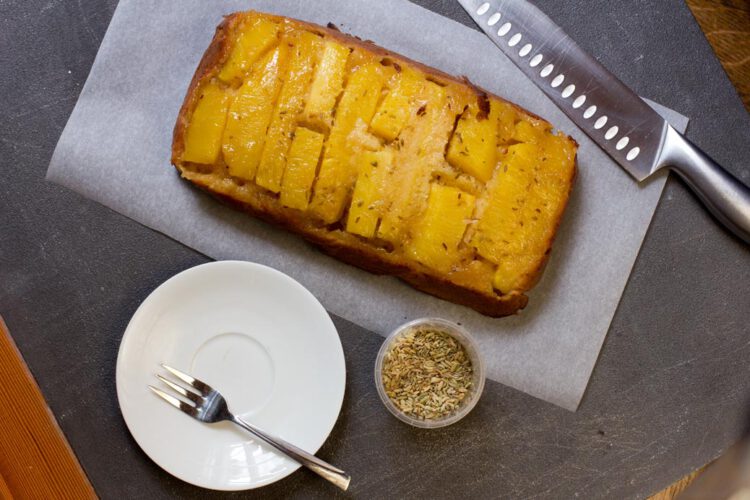
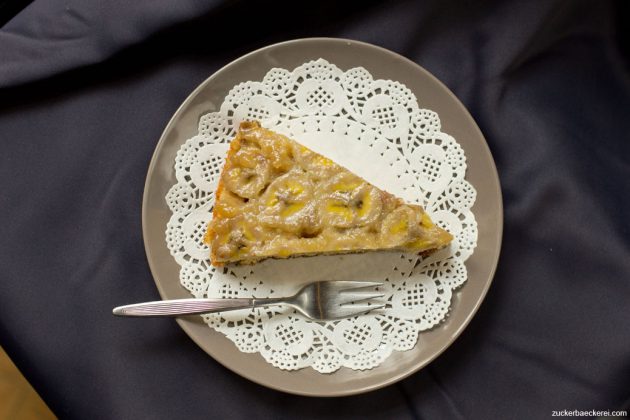
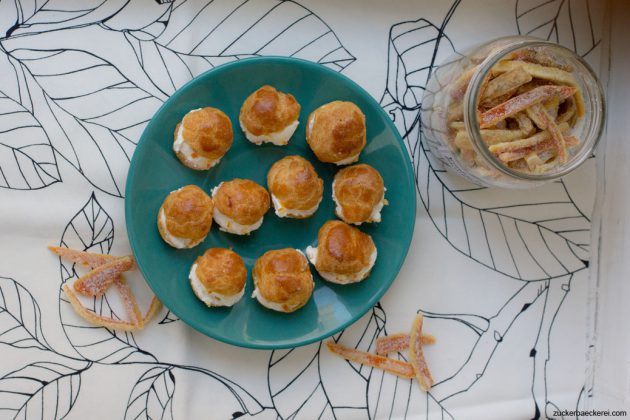

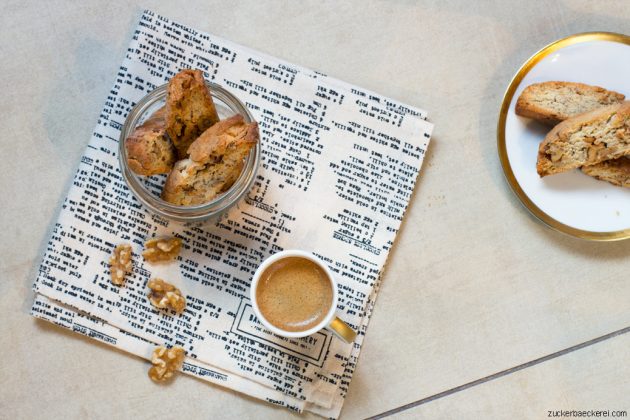
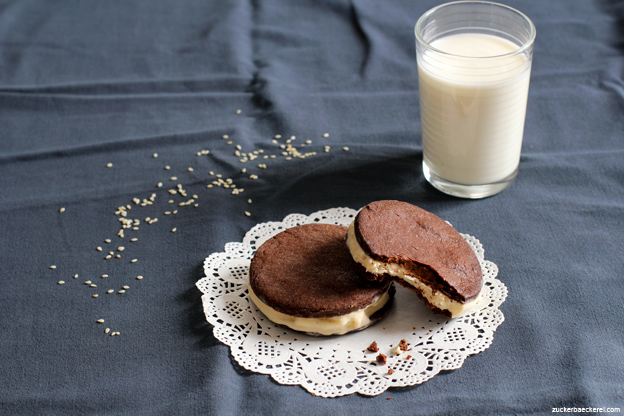
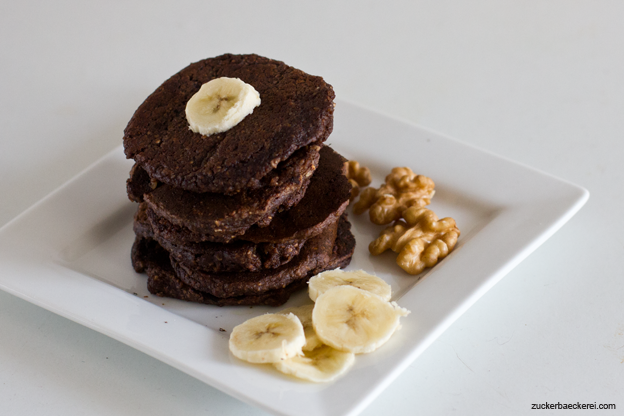

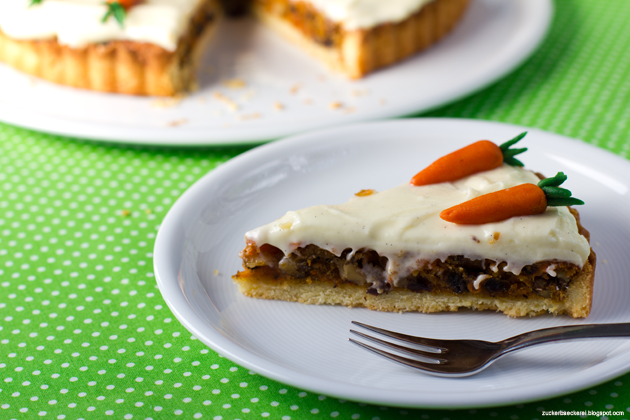

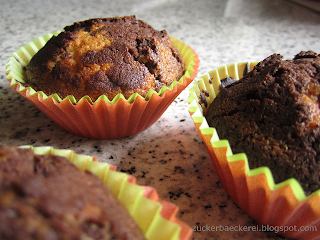

 Hi, ich bin Jana. Seit 2009 veröffentliche ich hier wöchentlich Rezepte, Reiseberichte, Restaurantempfehlungen (meistens in Wien), Linktipps und alles, was ich sonst noch spannend finde. Ich arbeite als Podcastproduzentin und freie Kulinarikjournalistin. Lies mehr über mich und die Zuckerbäckerei auf der
Hi, ich bin Jana. Seit 2009 veröffentliche ich hier wöchentlich Rezepte, Reiseberichte, Restaurantempfehlungen (meistens in Wien), Linktipps und alles, was ich sonst noch spannend finde. Ich arbeite als Podcastproduzentin und freie Kulinarikjournalistin. Lies mehr über mich und die Zuckerbäckerei auf der 

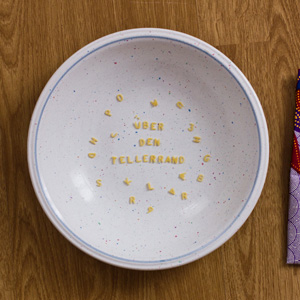 Über den Tellerrand
Über den Tellerrand Bücher
Bücher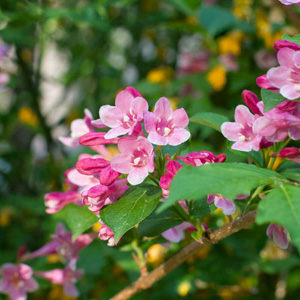 Zuckersüß
Zuckersüß


2 Comments
Comments are closed.